Sala10: Jorge Macchi y Edgardo Rudnitzky
virtual exhibition
TRain
This piece is a video that captures an insignificant visual phenomenon: the movement of raindrops across the window of a train in motion, filmed by Jorge Macchi on a trip from Lausanne to Milan. Before the artist’s eyes, these droplets suddenly produced a modest miracle: the train’s movement made them descend diagonally, forming lines across the glass and delicately tracing a profile like that of the mountains in the distance. Rapidly, the artist made one of those gestures that have turned him into a synonym for witnessing: he took out his phone and filmed a video of this vision. It’s not about fabricating a reflection or an image, but about capturing it before the fortuitous movements of water and the train made this self-generated landscape disappear.
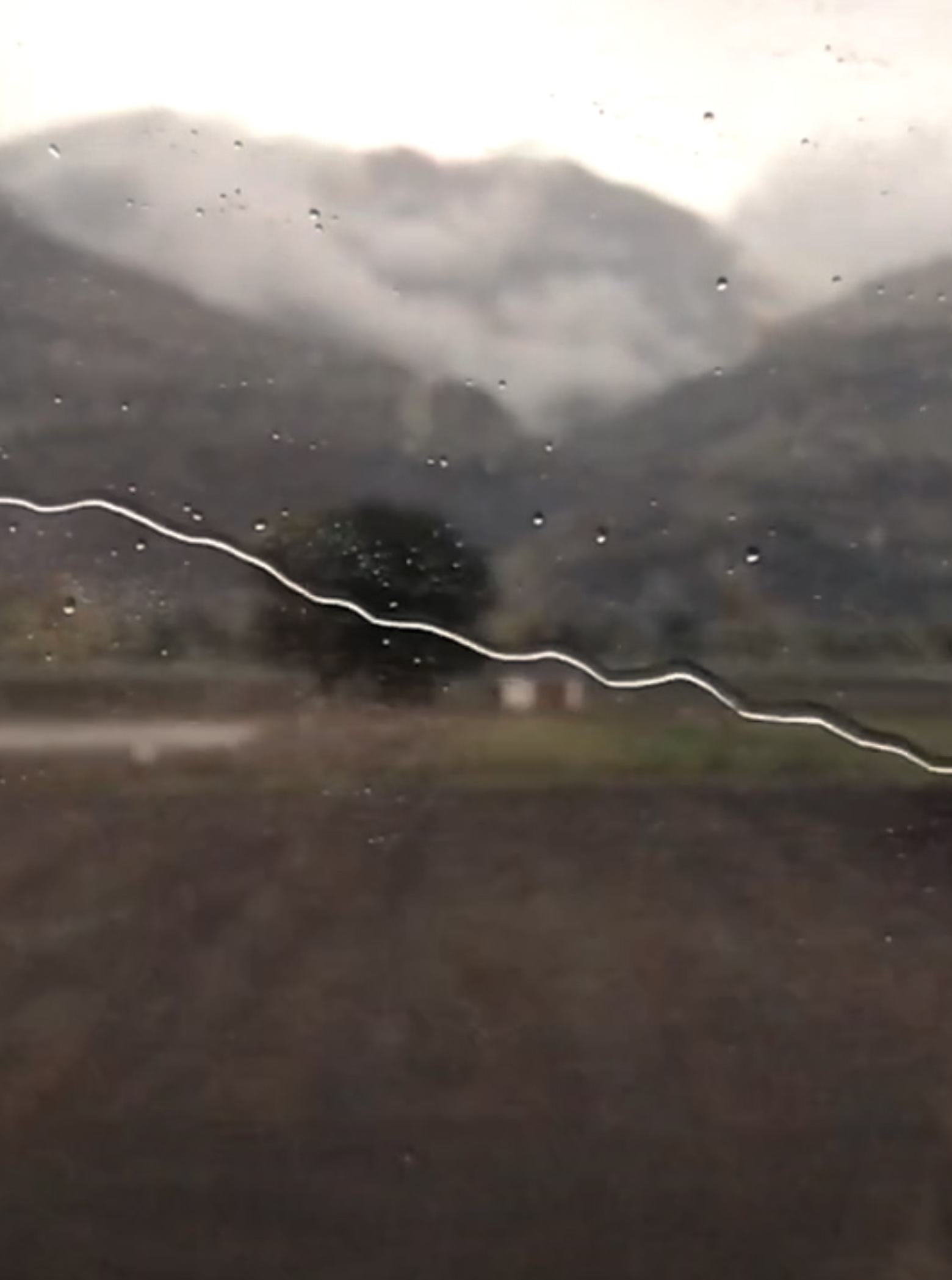
Landscapes on the Glass
In TRain (2019), the lines traced by the raindrop present minimal visual and material facts, in line with the way that Jorge Macchi creates art out of everyday wonders. To complete the image, the artist sought the cooperation of the composer and musician Edgardo Rudnitzky, as he has done so many times before. The score for this small wonder constitutes a pertinent exercise in montage: a composition that, like the raindrop, advances linearly and suddenly cuts off before a harmony unfolds that keeps the spectator in a state of tension without developing into an autonomous sonic narrative.
The enemies of contemporary art often argue that this aspiration to simplicity and immediatism in the appropriation of reality is proof that artists have renounced difficulty and technical skill. A video like this one by Macchi and Rudnitzky is proof that the opposite is true: its skillfulness is based on how its contrivance resembles a mere encounter with “the real.” This appropriated piece is perfect for discussing the degree of refinement and technique involved in the apparent immediatism of contemporary art. The act of registering a chance occurrence implies an accumulation of reflections and experiences. The light touch that has created this image reflects the practiced action of pursuing mimetic events, linguistic coincidences and visual paradoxes: the entire panoply of observations/fabrications that constitute Jorge Macchi’s art.
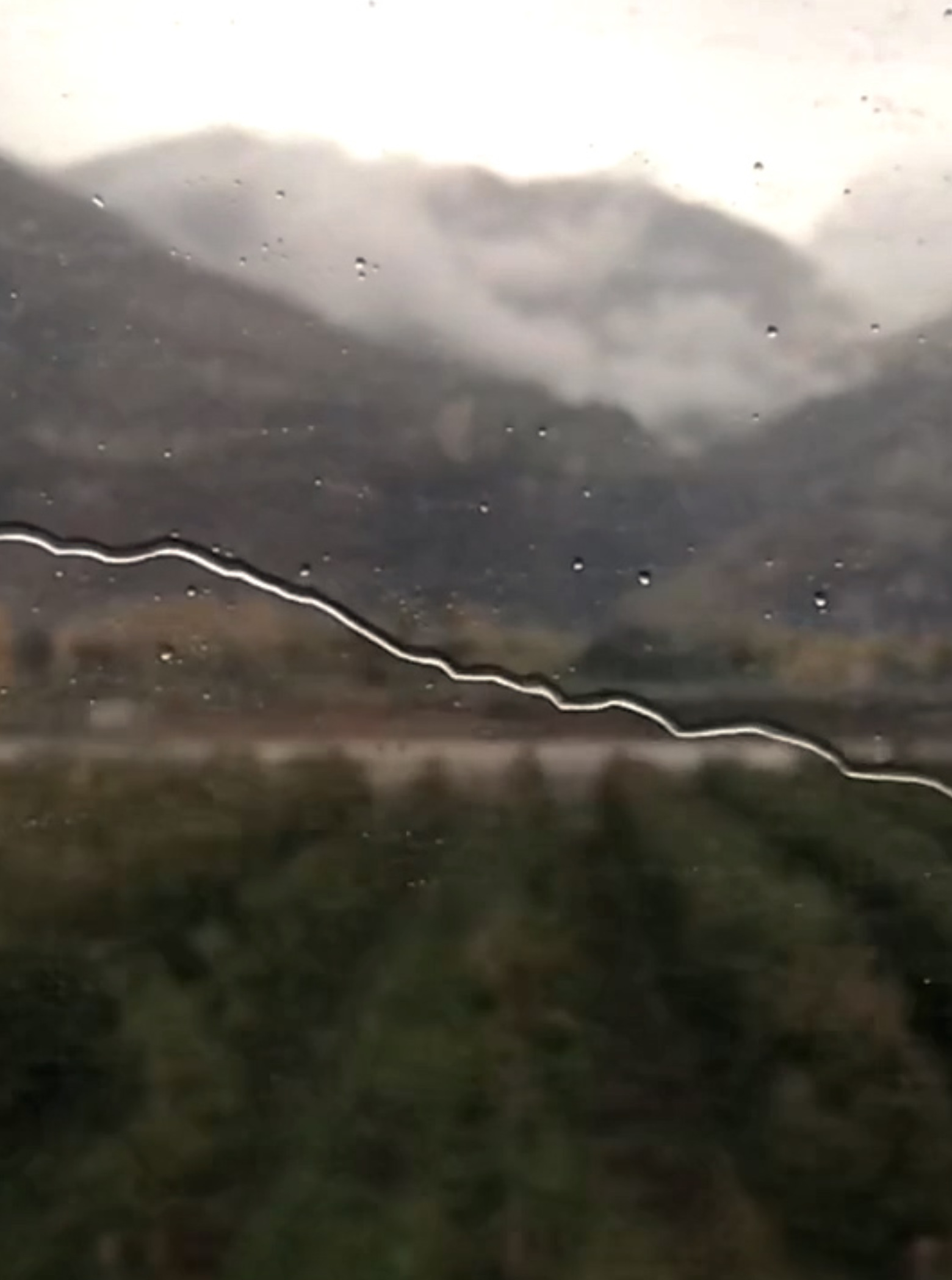
Language itself is used sparingly here. In the video’s title, Macchi plays with the juxtaposition of the words train and rain: a procedure not far removed from the collages he made in the past, aligning newspaper clippings in parallel so that they would coincide on a set phrase at the “knot”: Lifeless Bodies (2003) and Serial Victim (2005) are but two examples. This homophony confesses the conceptually key character of this piece and many others by Macchi. The fascination provoked by these pieces involves their self-conscious exercise of what Walter Benjamin called the mimetic faculty: “the gift of producing similarities […] and therefore also the gift of recognizing them”[1] that lies at the origin of many linguistic and aesthetic operations and that has a tendency toward historical transformation in spite of its constancy. Above all, Macci is a connoisseur of the mimetics of everyday life, a professional of encounters, déjà vu and objective fiction. In his work, the perception of a world of spontaneous analogies and mimetic paradoxes can be expressed through enormous installations with a notable technical complexity or through an encounter with microscopic fractures in our sensibility. At both extremes, he seeks to produce a sensation of limited paranoia: the perception that an endless chain of coincidences lies beyond the order of the world and society.
TRain belongs to the range of infinitesimal encounters. It suggests a skill developed by the artist, a technical wonder: that of walking down the street and looking sideways to find scraps of writing, a pattern worthy of being redeemed through the delicacy of painting in a discarded piece of cardboard.
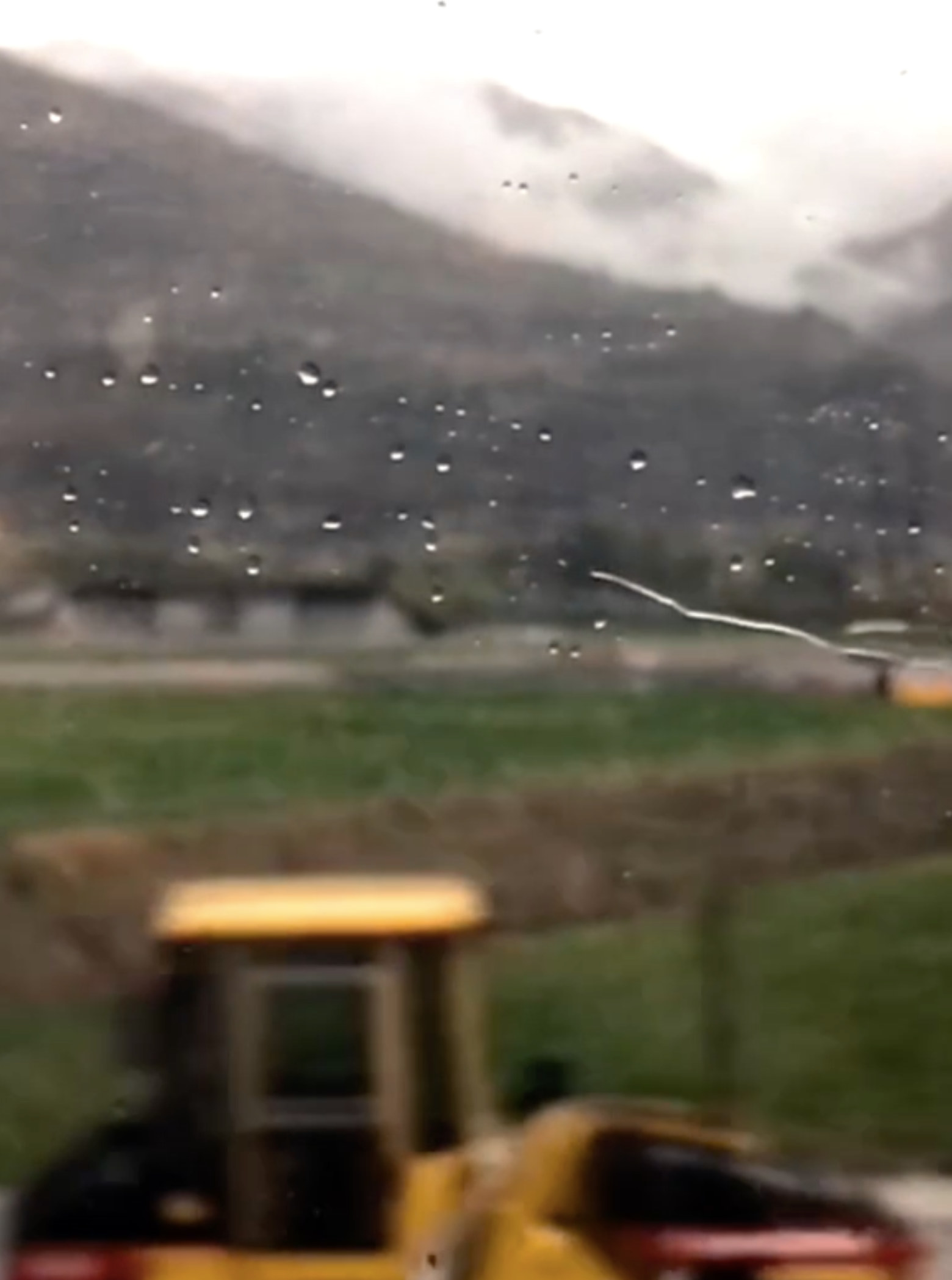
A skill that can be traced back to the art of the ragpicker who, as Baudelaire describes, goes “bumping into walls with a poet’s grace, pouring out his heartfelt schemes to one and all.”[2]
This superposition is conscious of the history and genealogy of art. The traced landscape and the raindrop on the window of the train echo a procedure that Macchi has used in some of his most celebrated pieces: the search for patterns on a transparent glass. For the book Buenos Aires Tour (2004), the artist organized his exploration of post-surrealist coincidences in the Argentinean capital through the cracks in a glass pane mounted on a map of the city. This broken glass, and the general conception of those “glass delays,” refers us back to the legacy of Marcel Duchamp, particularly the cracks that formed in The Large Glass (1915-1923) following an accident in moving the piece. Instead of showing off these references like many other artists, Macchi subordinates them to the sense of wonder found in his work. It’s even possible that the miracles that the artist has inscribed in his glass panes are a sort of silent refutation of Duchamp. Aside from being an almost sinister miracle, what are the two broken glass panes with nearly identical patterns of cracks from the series Parallel Lives (1998) but a refutation of the Duchampian accident, the triumph of artistry over the Dadaistic random act?

If we wish to see a Duchampian reference in the raindrop that traces a landscape, it is a discreet, original one. A readymade, but also a victory over the tired rhythm of the contemporary readymade.[3]
One of the constant vectors in Jorge Macchi’s work is the relationship between image and music: the way in which the composition and its performance serve as a referent for a new form of art centered not on a virtuoso performer but on a “virtuoso listener” for whom “all sound may be music.”[4] Macchi establishes a constant interrelationship that takes sound as a source of temporality and narrativity for the visual and conceptual object and the artwork as an orchestration of multiple elements rather than as an inert object. The variety of the collaborations between Macchi and Rudnitzky bears witness to the complementarity of the questions examined by these two artists and the way in which their respective disciplines produce a synergy through the exploration of their conceptual margins and metaphorical fields.
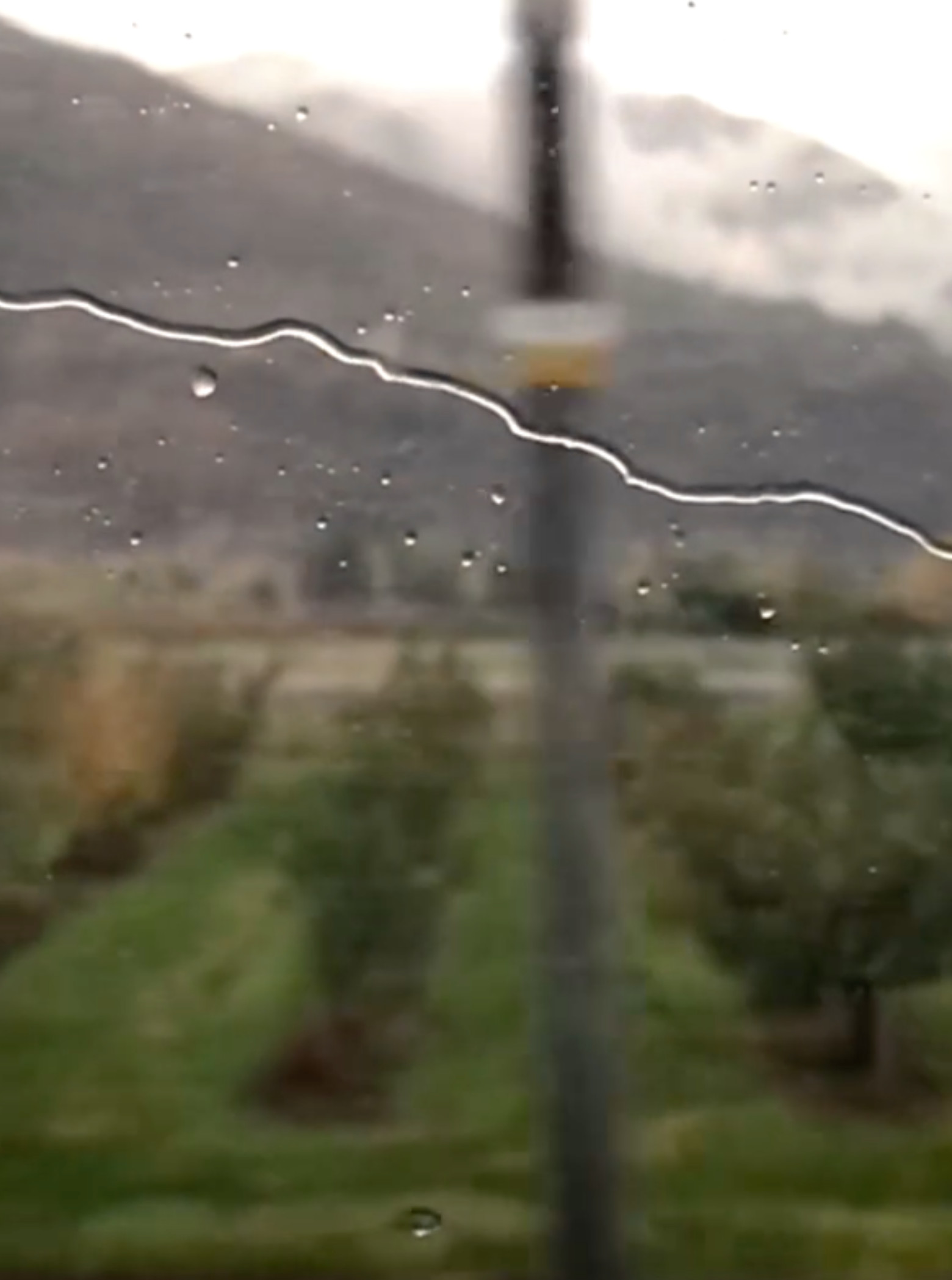
These notes don’t aim to “translate” the piece’s meaning: one of the pleasures of Macchi’s work is that it avoids the tedium of interpretation and heuristics, avoiding any attempts to turn it into a symbol. His pieces are phenomena that create novel experiences, hoping to surprise us with all the eloquence of a raindrop’s ability to paint landscapes. Macchi seeks to provoke a sense of wonder in the spectator, the state that the Polish poet Wislawa Szymborska evokes in a poem titled, not unironically, “Travel Elegy,” which finds a pretext for a tourist’s contemplations in the possession of a particularity that lacks any qualities other the act of catching our gaze:
Everything's mine but just on loan,
nothing for the memory to hold,
though mine as long as I look.
Inexhaustible, unembraceable,
but particular to the smallest fiber,
grain of sand, drop of water
landscapes. [5]
Though the video endlessly repeats the lines traced by the raindrop, a part of us suspects that it’s different each time, rebelling against programming and writing.
Cuauhtémoc Medina
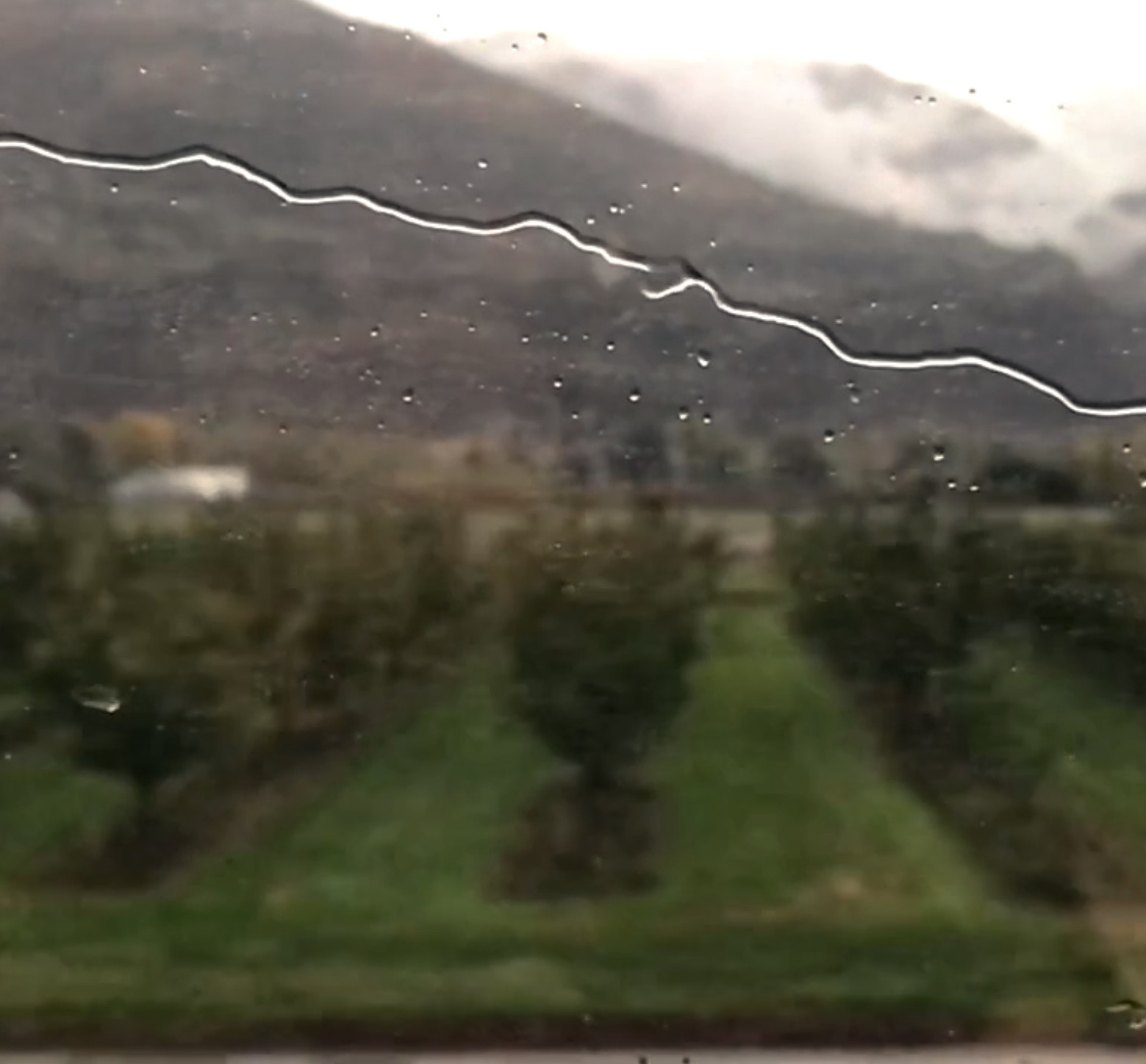
[1] Jorge Macchi, La virgen extraviada, Buenos Aires, Ediciones Manuela López Anaya, 2020, pp. 146-147. The passage in question is included in this online publication.
[2] Charles Baudelaire, “Ragpicker’s Wine,” Les Fleurs du Mal, Richard Howard (trans.), Boston, David R. Godine, 1982, p. 114.
[3] See Cuauhtémoc Medina, “À propos des already made: notas sobre una genealogía en disputa,” in Jessica Morgan (ed.), An Unruly History of the Readymade. Sexta interpretación del acervo de La Colección Jumex, Mexico, Fundación Jumex, 2008, pp. 43-53, 76-82, 105-112.
[4] George Brecht, Notebook III, April-August 1959, Dieter Daniels in collaboration with Hermann Braun (eds.), Cologne, Verlag der Buchhandlung Walther König, 1991, p. 123.
[5] Wislawa Szymborska, “Travel Elegy,” in View with a Grain of Sand, Stanislaw Barailczak and Clare Cavanagh (trans.), San Diego, Harcourt Brace & Company, 1995, p. 19.

A Train Trip from Lausanne to Milan
Jorge Macchi
After having something to eat, I emerge from my refuge and walk to the lobby of another hotel in order to wait for the bus that will cross the mountains. I find myself in an enormous hall with many chairs and immense windows. The rain traces threads of water across the surface of the glass, interfering with the blurry image of the mountains. Two or three months ago, I travelled by train from Lausanne to Milan, crossing the Alps. It was on a rainy afternoon just like this one and the mountains were just as blurry as they are today, water forming rivers on the outside of the glass. Thanks to the velocity of the train, these lines ran diagonally, down and to the right, faithfully reproducing the slope of the gray mountain that could be seen in the distance, as if trying to capture its form on this transparent surface for an instant. Every once in a while, an isolated raindrop pushed by the wind slowly approached this river, producing a momentary distention. This same wind eventually dried out the line of water, transforming it into a series of droplets. Right when it seemed this process had exhausted itself, another river emerged on the leftmost edge of the window, rapidly descending to become a new portrait of the mountain. Meanwhile, the landscape became increasingly darker as night fell and my reflection started to become visible on the surface of the glass inside the train car.
Jorge Macchi, La virgen extraviada, Buenos Aires, Ediciones Manuela López Anaya, 2020, pp. 146-147.

Jorge Macchi. La cathedrale engloutie: Music as Specter
Alejandra Aguado
Music is an echo of the invisible world.
Giuseppe Mazzini
The power of Jorge Macchi´s work lies as much in what is said as in what is kept silent. It could be said that his work vacillates between large presences and absences: almost ghost-like, it operates according to what is revealed or vanishes in situations that perplex us. [...]
COMPLETE TEXT HERE
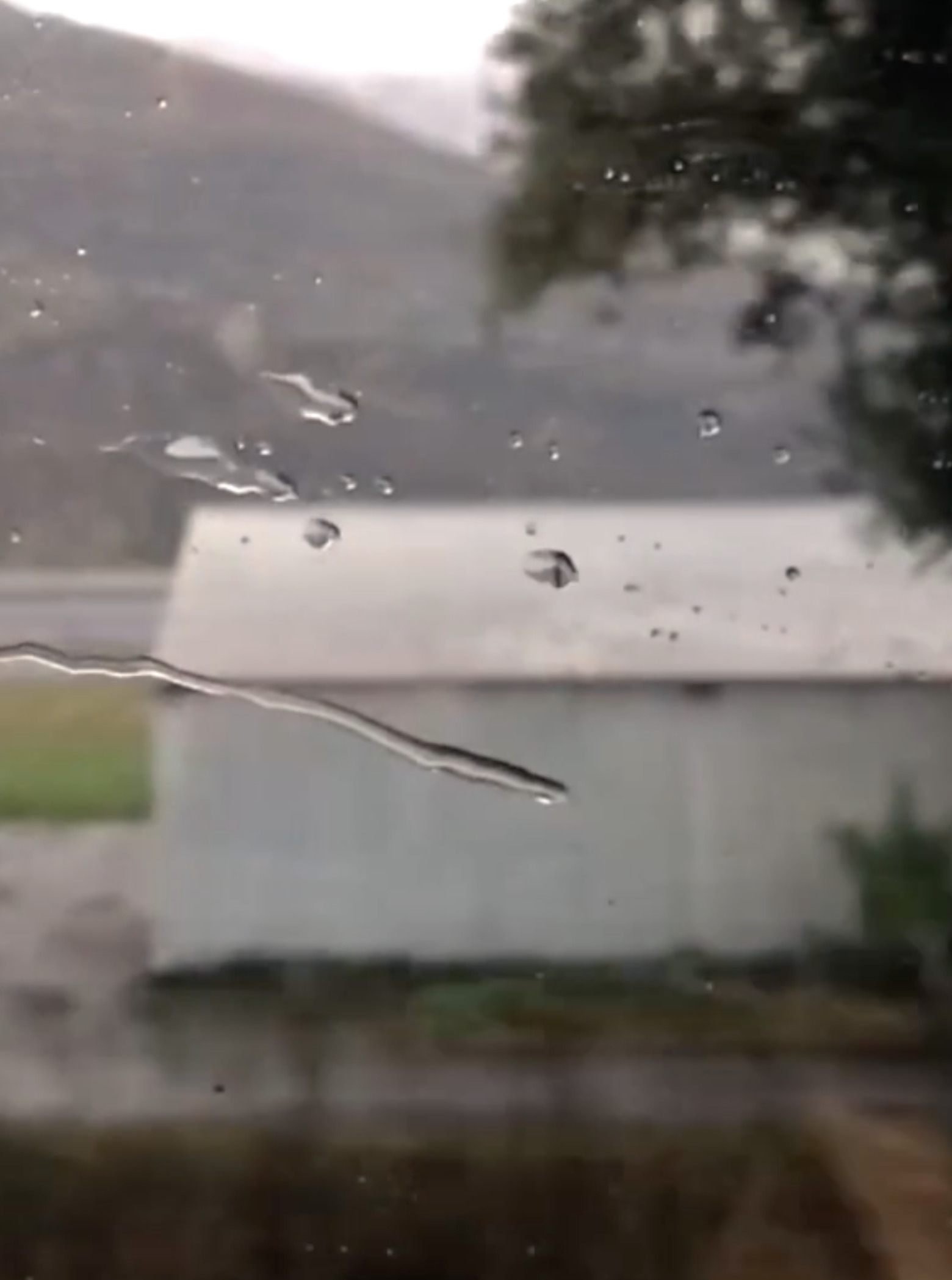
Jorge Macchi and Edgardo Rudnitzky
TRain, 2019
HD video
3’ 23”
Courtesy of the artist
Jorge Macchi (Buenos Aires, Argentina, 1963)
A plastic and audiovisual artist, he works with everyday materials that he subjects to subtle, ingenious gestures of decontextualization in order to multiply the possibilities of perception. In 2001, he was awarded the John Simon Guggenheim Memorial Foundation fellowship. He represented Argentina at the Venice Biennale in 2005. He has held three monographic exhibitions: Perspective, Malba, Argentina, and CA2M, Spain, (2016); Music Stands Still, SMAK, Belgium (2011); The Anatomy of Melancholy, Santander Cultural, Brazil, and the Blanton Museum of Art, United States (2007); and CGAC, Spain (2008). Other individual exhibitions include The Submerged Cathedral, Musée Cantonal de Beaux Arts, Switzerland (2020); Lampo, NC Arte, Colombia (2015); Prestidigitador, MUAC, Mexico (2014); Container, Kunstmuseum Luzern, Switzerland (2013); and Last Minute, Pinacoteca del Estado de São Paulo, Brazil (2009). He lives and works in Buenos Aires.
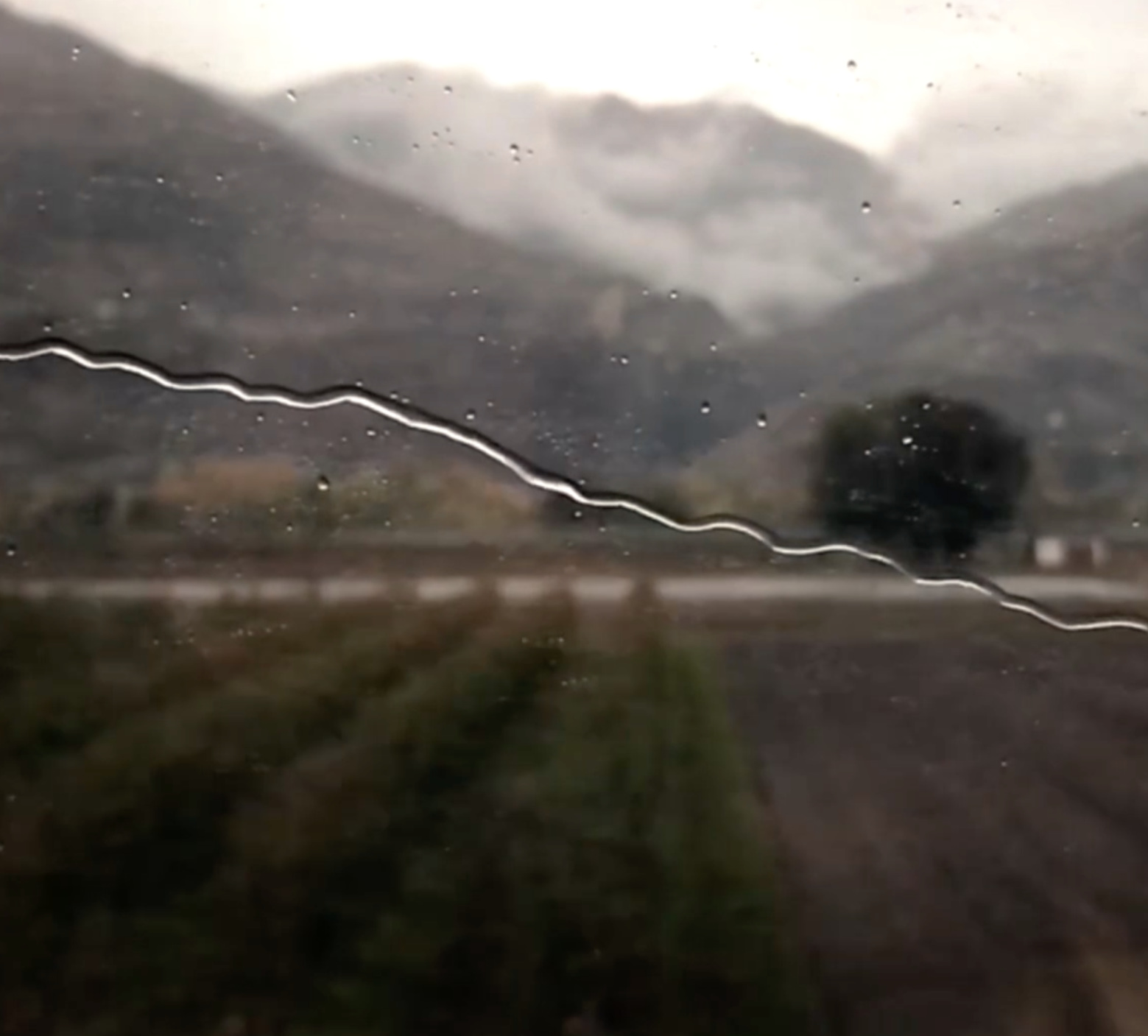
Edgardo Rudnitzky (Buenos Aires, Argentina, 1956)
A composer and sound artist, he centers his work on the “inevitable” fusion between the tangible and the intangible: despite the apparently immaterial nature of sound, it’s treated like a sculptural material, as something tangible. This thinking has led him to develop pieces with many different formats and supports: installations, performances, concerts and films. His work has been seen/heard at the Staatsoper Unter den Linden, Germany (2023); Humboldt Forum, Germany (2024); Schlossmediale, Switzerland (2024); SoundCinema Düsseldorf, Germany (2021); Más allá del sonido, MUNTREF, Argentina (2016); and Notations: The Cage Effect Today, United States (2012), among other spaces. He lives and works in Berlin.

Curatorship: Cuauhtémoc Medina
Texts: Cuauhtémoc Medina, Alejandra Aguado
Content Direction: Ekaterina Álvarez Romero, Cuauhtémoc Medina
Curatorial Coordination: Andrea García
Digital Management: Ana Cristina Sol Sañudo
Content Editing: Roberto Barajas Amieva, Vanessa López García, Yerem Mújica
Toscano
English Translation: Julianna Neuhouser
Press: Francisco Domínguez Morales, Eduardo Lomas


